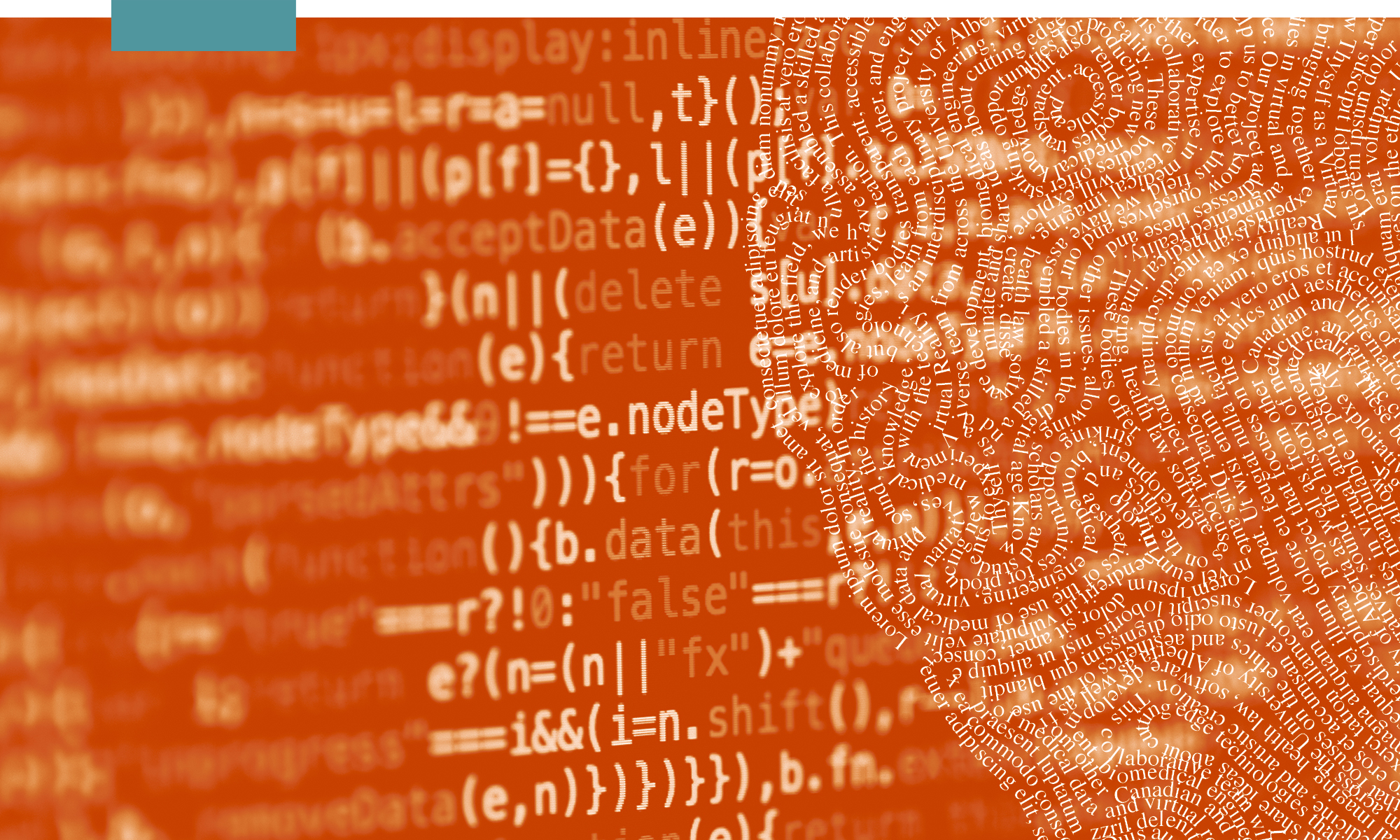Marilène Oliver, Scott Smallwood, J.R. Carpenter, Stephan Moore
Excerpt about My Data Body from Know Thyself as a Virtual Reality essay by Lianne McTavish
Artist Marilène Oliver works with collaborators Scott Smallwood, Stephan Moore, and J. R. Carpenter to investigate the digital production and dissemination of personal data, including the MR images of interest to Hertz. Her VR artworks, My Data Body and Your Data Body, are complementary, combining medical scans, social media posts, biometric details, and personal identification numbers to analyze the politics and ethics of disseminating digital information. My Data Body features a high-resolution, volume rendered MR scan of Oliver’s body. As visitors to the VR work enter the semi-transparent body and explore it, they encounter data corpuses downloaded from her Facebook and Google accounts as well as texts relating the data usage agreements of these corporations. Passwords and logins flow back and forth through veins and arteries. Those engaged with My Data Body can read, listen to, manipulate, discard, or re-arrange this digital information; they might also decide to dissect the digital body by removing and examining its organs and bones. Each organ can be pulled out of the body to scatter “particles”; the brain spills password and login windows, the intestines shed data cookies, and the heart sprinkles emojis. Poetry written by J. R. Carpenter dangles from the bones, reflecting on what it is like both to live with and as a body of data. Every anatomical element has a different sound created by Scott Smallwood and Stephan Moore attached to it. As users manipulate the body parts, they activate these sounds and compose a unique soundscape. At the same time, Oliver’s facial recognition scans encircle the scene, alluding to the audiences that witnessed anatomical dissections in the past. With many historical layers and interactive options, My Data Body questions data ownership, dignity, and consent, while suggesting ways to think about how datafication is changing understandings of both ourselves and others.
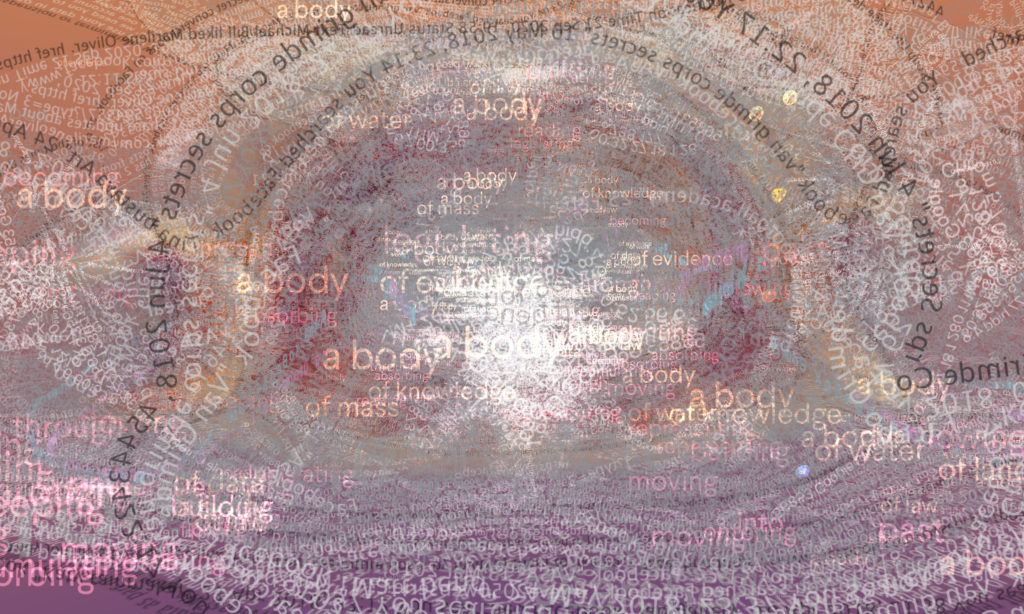
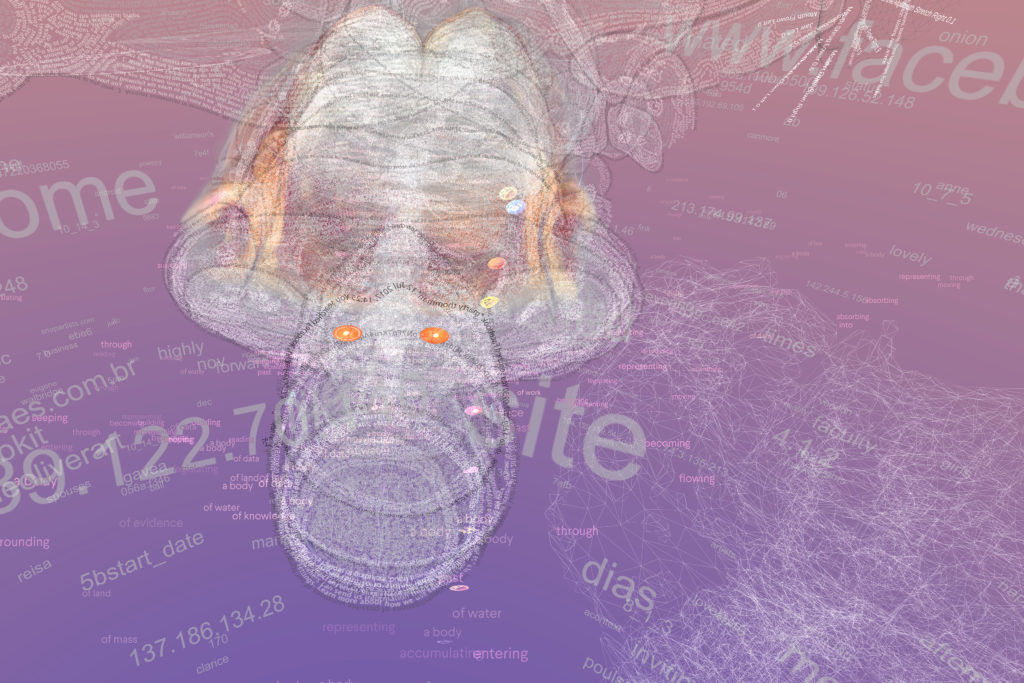
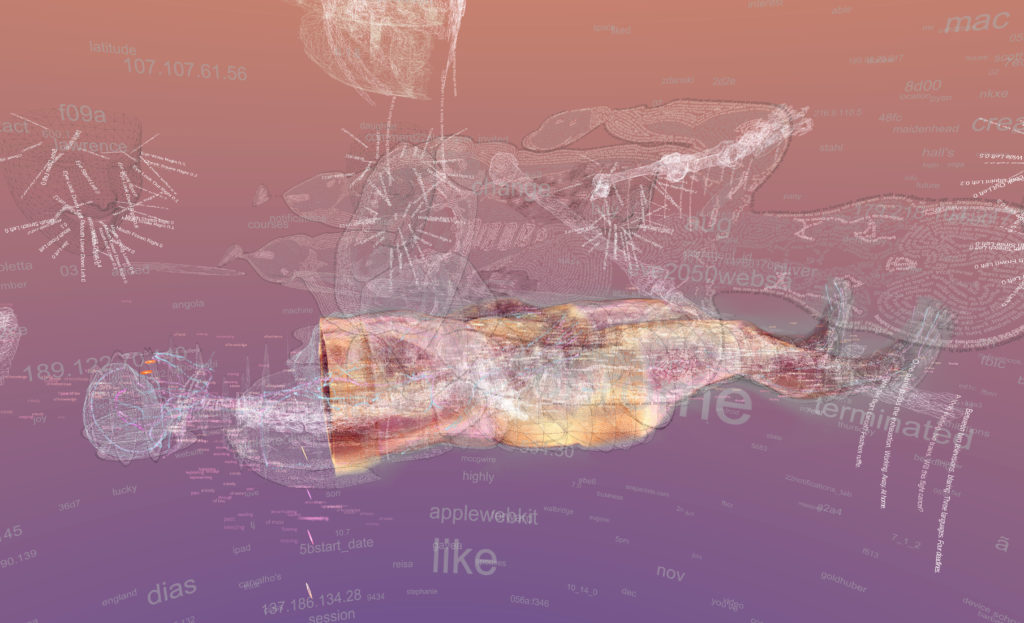
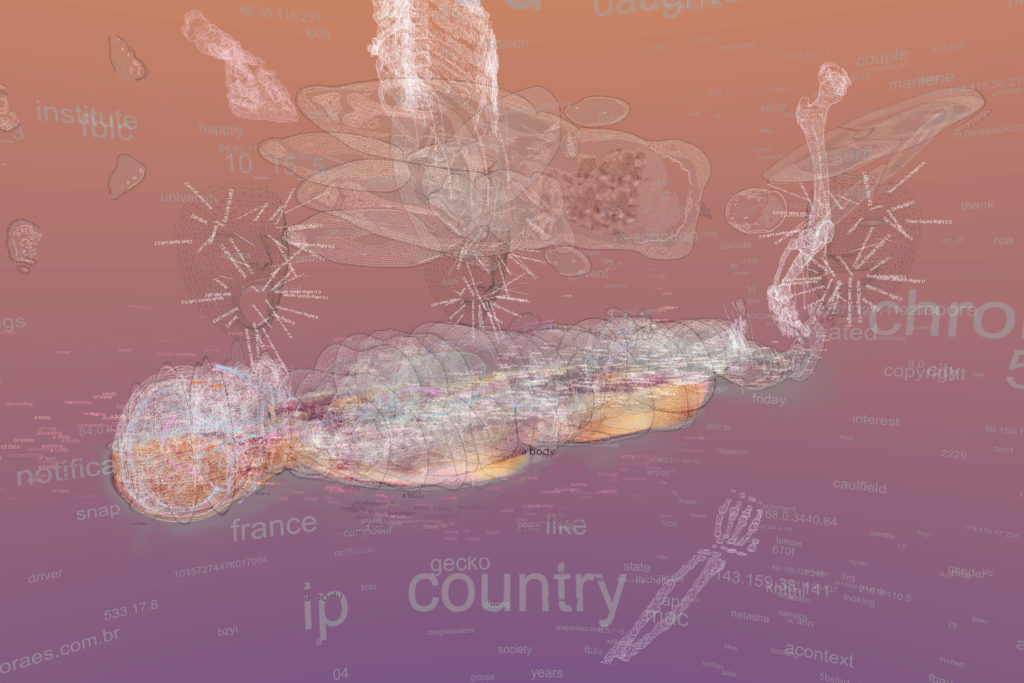
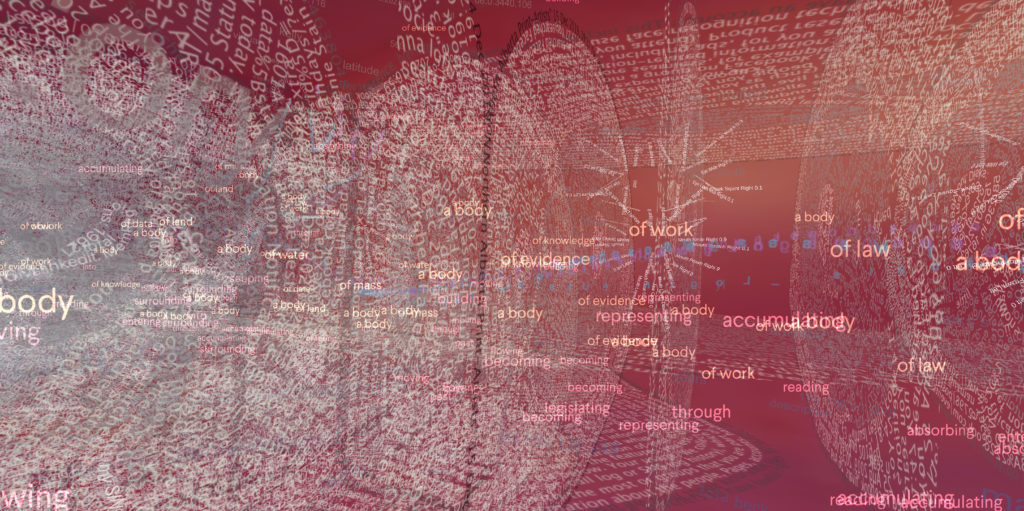
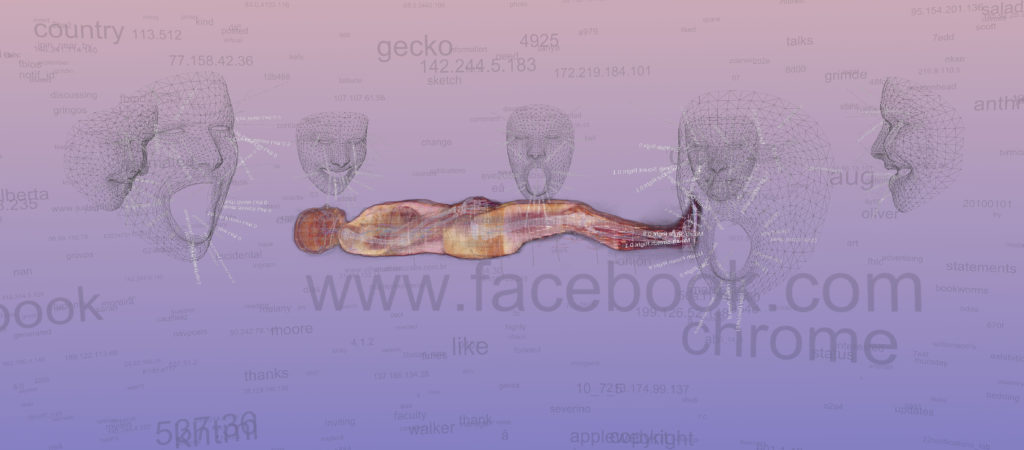
Marilène Oliver (she/her) is an associate professor of printmaking and media arts at the University of Alberta. A settler scholar, Marilène works at a crossroads between new digital technologies and traditional print and sculpture, with her finished objects bridging the virtual and the re(al worlds. Oliver uses various scanning technologies, such as MRI and CT to create artworks that invite us to materially contemplate our increasingly digitized selves. Marilène currently leads two art & science research projects at the University of Alberta: Dyscorpia: Future Intersections of the Body and Technology and Know Thyself as a Virtual Reality.
Scott Smallwood (he/him) is a sound artist, composer, and performer who creates works inspired by discovered textures and forms, through a practice of listening, field recording, and improvisation. In addition to composing works for ensembles and electronics, he designs experimental instruments and software, as well as sound installations and audio games, often for site-specific scenarios. Much of his recent work is often concerned with the soundscapes of climate change, and the dichotomy between ecstatic and luxuriating states of noise and the precious commodity of natural acoustical environments and quiet spaces. A settler scholar, he performs as one-half of the laptop/electronic duo Evidence (with Stephan Moore) and teaches as a professor of composition at the University of Alberta, where he also serves as the director of the Sound Studies Institute.
J. R. Carpenter (she/her) is a UK-based artist, writer, performer, and researcher working across performance, print, and digital media. Her pioneering web-based works have been presented in museums, galleries, and festivals around the world. Her debut poetry collection, An Ocean of Static, was highly commended for the Forward Prizes 2018. Her latest collection, This is a Picture of Wind, was one of The Guardian’s best poetry books of 2020. She is a Fellow of the Eccles Centre For North American Studies at the British Library and the Moore Institute at NUI Galway.
Stephan Moore (he/him) is a sound artist, designer, composer, improviser, programmer, engineer, teacher, and curator based in Chicago. His creative work manifests as electronic studio compositions, improvisational outbursts, sound installations, scores for collaborative performances, algorithmic compositions, interactive art, and sound designs for unusual circumstances. Since 2014, he has been the curator of sound art for the Caramoor Center for Music and the Arts. In 2019, he co-founded the Chicago Laboratory for Electro-Acoustic Theater to promote and encourage the creation of multichannel audio works. He is a Distinguished Associate Professor of Instruction in the Sound Arts and Industries program at Northwestern University.
Artist – Marilene Oliver
Sound – Scott Smallwood & Stephan Moore
Poetry – J.R. Carpenter
Unity development – Walter Ostrander, Jiayi Ye, Kirtan Shah & Daniel Evans
Visual asset assistant – Chelsey Campbell
MRI Research Associate – Peter Seres & Richard Thompson
